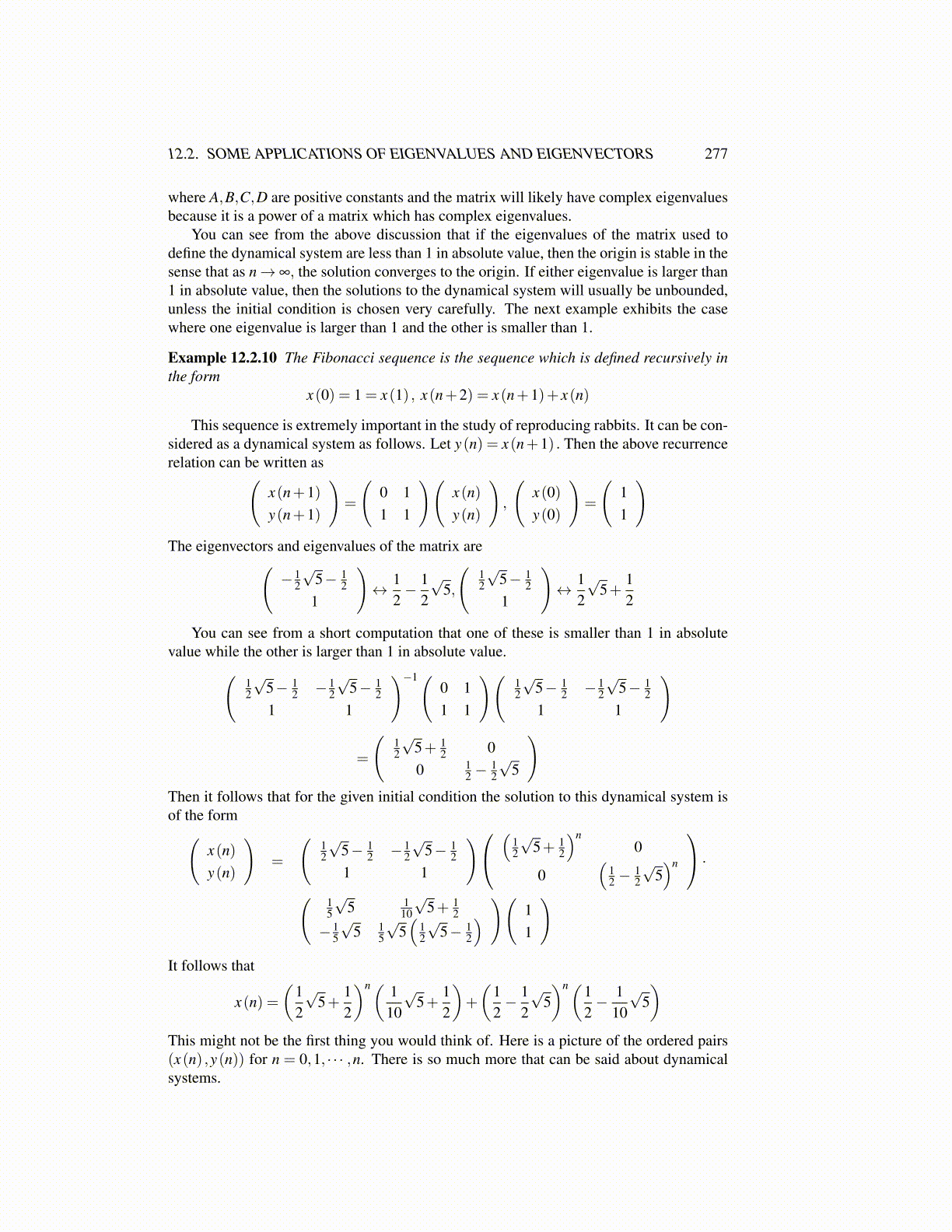
12.2. SOME APPLICATIONS OF EIGENVALUES AND EIGENVECTORS 277
where A,B,C,D are positive constants and the matrix will likely have complex eigenvaluesbecause it is a power of a matrix which has complex eigenvalues.
You can see from the above discussion that if the eigenvalues of the matrix used todefine the dynamical system are less than 1 in absolute value, then the origin is stable in thesense that as n→ ∞, the solution converges to the origin. If either eigenvalue is larger than1 in absolute value, then the solutions to the dynamical system will usually be unbounded,unless the initial condition is chosen very carefully. The next example exhibits the casewhere one eigenvalue is larger than 1 and the other is smaller than 1.
Example 12.2.10 The Fibonacci sequence is the sequence which is defined recursively inthe form
x(0) = 1 = x(1) , x(n+2) = x(n+1)+ x(n)
This sequence is extremely important in the study of reproducing rabbits. It can be con-sidered as a dynamical system as follows. Let y(n) = x(n+1) . Then the above recurrencerelation can be written as(
x(n+1)y(n+1)
)=
(0 11 1
)(x(n)y(n)
),
(x(0)y(0)
)=
(11
)The eigenvectors and eigenvalues of the matrix are(
− 12
√5− 1
21
)↔ 1
2− 1
2
√5,
(12
√5− 1
21
)↔ 1
2
√5+
12
You can see from a short computation that one of these is smaller than 1 in absolutevalue while the other is larger than 1 in absolute value.(
12
√5− 1
2 − 12
√5− 1
21 1
)−1(0 11 1
)(12
√5− 1
2 − 12
√5− 1
21 1
)
=
(12
√5+ 1
2 00 1
2 −12
√5
)Then it follows that for the given initial condition the solution to this dynamical system isof the form(
x(n)y(n)
)=
(12
√5− 1
2 − 12
√5− 1
21 1
) (12
√5+ 1
2
)n0
0(
12 −
12
√5)n
·(
15
√5 1
10
√5+ 1
2
− 15
√5 1
5
√5(
12
√5− 1
2
) )( 11
)It follows that
x(n) =(
12
√5+
12
)n( 110
√5+
12
)+
(12− 1
2
√5)n(1
2− 1
10
√5)
This might not be the first thing you would think of. Here is a picture of the ordered pairs(x(n) ,y(n)) for n = 0,1, · · · ,n. There is so much more that can be said about dynamicalsystems.